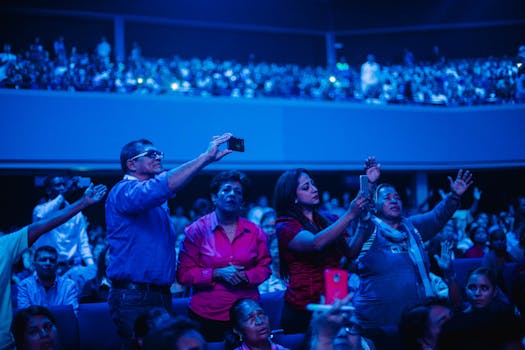Digital tools have transformed the music industry, enabling artists to explore their creativity, connect with fans, and distribute their work in unprecedented ways. From composition software to social media platforms, these technologies have reshaped every aspect of music production and consumption. This article explores the impact of digital tools on music, uncovering how they have revolutionized the landscape for artists and listeners alike.
The emergence of digital technology has democratized music creation, allowing individuals from diverse backgrounds to share their talents easily. Now, anyone with a computer or smartphone can produce high-quality music. This accessibility has led to an explosion of new genres and styles, enriching the global music scene. As a result, the barrier to entry in the music industry has significantly lowered.
Moreover, digital tools have enhanced how musicians engage with their audience. Social media platforms and streaming services have created channels for direct interaction, fostering a sense of community between artists and fans. In this dynamic environment, successful musicians are often those who can effectively leverage these tools for promotion and engagement.
Evolution of Music Production
The digital era has redefined music production, moving away from traditional recording studios to home-based setups. Musicians can now access professional-grade recording software and plugins from anywhere. This flexibility has transformed how music is created and produced.
Notably, digital audio workstations (DAWs) like Ableton Live and Pro Tools allow for intricate editing and sound manipulation. Musicians can experiment with sounds and effects without the constraints of physical hardware. Consequently, creativity knows no bounds in the digital realm.
Additionally, technologies such as MIDI (Musical Instrument Digital Interface) have streamlined the composition process. Artists can connect virtual instruments to their computer, making it easier to create complex arrangements. This capability modernizes how musicians write and produce their work.
The rise of cloud-based storage solutions has also impacted collaboration. Musicians can now share files with producers and fellow artists in real-time, regardless of their geographical locations. This ability fosters collaboration among diverse talents, leading to innovative music projects.
Finally, advancements in music software allow for real-time monitoring and adjusting of recordings. Artists can hear changes instantly, making the production process more efficient. Overall, digital tools have made music production more accessible, collaborative, and innovative.
Impact on Distribution
Digital tools have revolutionized music distribution, enabling artists to reach global audiences without relying on traditional record labels. Platforms like Spotify, Apple Music, and Bandcamp allow musicians to share their music directly with listeners. This shift has changed the business model for many artists.
Moreover, digital distribution offers musicians important metrics about their audience’s behavior. Analytics tools help artists understand which songs resonate, informing future music-making decisions. Consequently, artists can tailor their work more effectively to their audience’s preferences.
Additionally, social media platforms have become vital for promoting music. Artists can reach fans directly, share updates, and even engage in conversations. This direct line of communication fosters loyalty and encourages fans to support artists through streaming and purchasing their music.
Furthermore, digital distribution minimizes production costs. Artists no longer need to invest in physical copies or shipping logistics. Instead, they can focus their resources on creating quality content and marketing their music online.
In essence, digital tools have transformed music distribution into a more democratized, data-driven, and direct process. Artists now have greater control over their work and can build diverse revenue streams.
Changing Consumer Behaviors
The rise of digital tools has significantly altered consumer behaviors in the music industry. Streaming services have become the primary way people listen to music, leading to a shift from ownership to access. Consumers now favor convenience and variety over physical albums.
This shift has implications for how artists promote their music. Instead of focusing solely on album releases, they may also release singles or EPs more frequently. This strategy keeps their work in listeners’ minds and maintains engagement.
Moreover, consumers now actively participate in the music discovery process. Curated playlists on platforms like Spotify allow users to explore new genres and artists effortlessly. This collaborative approach enriches the listening experience for many music fans.
Social media has also changed how consumers engage with music. Fans can discuss, share, and react to new releases in real-time, shaping overall cultural trends. Viral challenges often emerge around songs, further propelling them into the spotlight.
Ultimately, digital tools have empowered consumers with more choices and interaction, redefining their relationship with music. Artists must adapt to these behaviors to thrive in this changing landscape.
Emergence of New Genres and Styles
Digital tools have played a crucial role in the emergence of new music genres and styles. The accessibility of production software allows artists to blend traditional sounds with innovative techniques. This experimentation leads to fresh, unique musical expressions.
Genres such as lo-fi, vaporwave, and trap emerged through the creative use of digital tools. Producers utilize software to manipulate sounds, creating distinct sonic landscapes that challenge conventional genre boundaries. This flexibility enriches the music landscape.
Moreover, the rise of online collaboration has led to cross-genre partnerships. Artists from different backgrounds can work together seamlessly using digital tools, producing hybrid genres that reflect diverse influences. This fusion fosters creativity and broadens musical tastes.
Many artists also embrace digital tools to incorporate visual elements into their music. Music videos created with animation and digital effects enhance the overall experience. Such multimedia presentations attract new audiences and enrich storytelling through music.
In this way, digital tools have expanded the possibilities for music creation, encouraging artists to defy conventional genres and continually push creative boundaries. This evolution enhances the richness of the music industry.
Role in Marketing and Promotion
In the current music landscape, digital tools are essential for marketing and promoting artists effectively. Social media provides platforms for artists to showcase their work, reach potential fans, and build their brand. These strategies have become integral to their success.
Furthermore, the power of targeted advertising allows musicians to reach specific demographics. Tools offered by platforms like Facebook and Instagram enable artists to promote their music to a relevant audience. This targeted approach improves engagement and conversion rates.
Additionally, music videos on platforms such as YouTube can significantly boost an artist’s visibility. Engaging visuals can attract new listeners while retaining current fans, turning views into streams and ultimately sales.
Artists can also host live-streaming events to promote their music in a direct and engaging format. These virtual concerts create a personal connection between the artist and fans, fostering loyalty and encouraging sharing across social networks.
Consequently, the marketing strategies now available to musicians are more diverse and effective than ever. Digital tools empower artists to take control of their brand and increase their chances of success.
Financial Implications
Digital tools have dramatically altered the financial landscape for musicians. While streaming services provide access to wider audiences, they often yield lower revenue per stream than traditional album sales. This reality has led many artists to rethink their financial strategies.
Given these changes, artists are exploring multiple revenue streams, including merchandise sales, live performances, and crowdfunding. Digital platforms enable them to connect directly with fans, creating opportunities for financial support.
Moreover, the ability to distribute music independently has empowered musicians to retain more of their earnings. By bypassing traditional record labels, artists can keep their profits from sales and streaming. This indicates a shift towards autonomy in the industry.
However, as artists navigate this new landscape, they must also learn to market themselves effectively. Those who understand how to utilize digital tools for promotion can capitalize on earning potential. An effective strategy combines creativity with business acumen.
Ultimately, while the financial implications of digital tools present challenges, they also create innovative opportunities for artists. Adaptability and strategic thinking are essential as musicians navigate this evolving terrain.
Conclusion
Digital tools have transformed the music industry in numerous ways, crafting a new paradigm for artists and listeners alike. From production to promotion, these technologies have reshaped how music is created, distributed, and experienced. As a result, musicians can now access resources that enrich their creative processes and engage with fans more effectively.
Moreover, the rise of digital tools has democratized the industry, leading to diverse sounds and emerging genres that reflect global influences. This evolution not only captivates audiences but also fosters a stronger sense of community among artists and fans.
While challenges exist, such as generating revenue in a streaming-dominated environment, the opportunities afforded by digital tools are vast. Artists who embrace these changes and adapt their strategies can thrive in the modern music landscape.
In essence, the impact of digital tools on music continues to unfold, promising an exciting and innovative future for musicians and music lovers alike. The journey of discovery and creativity within this digital age is just beginning.


